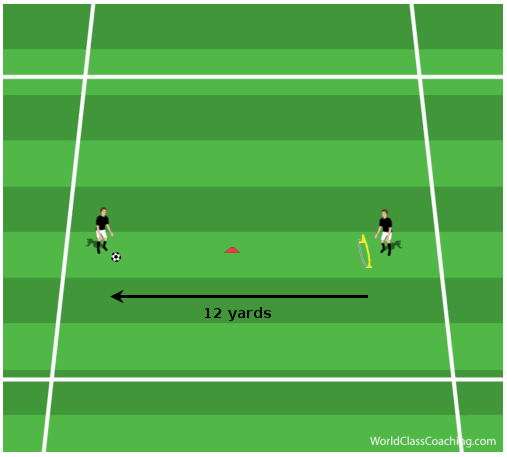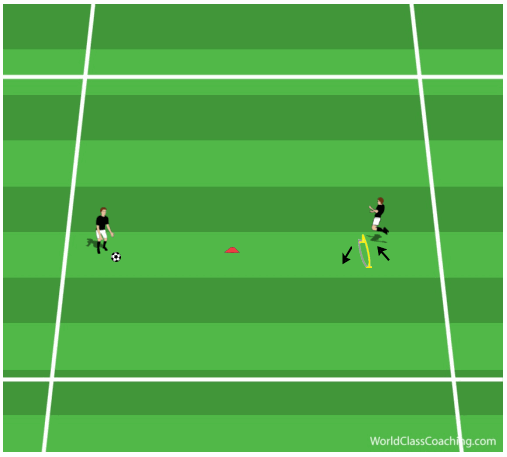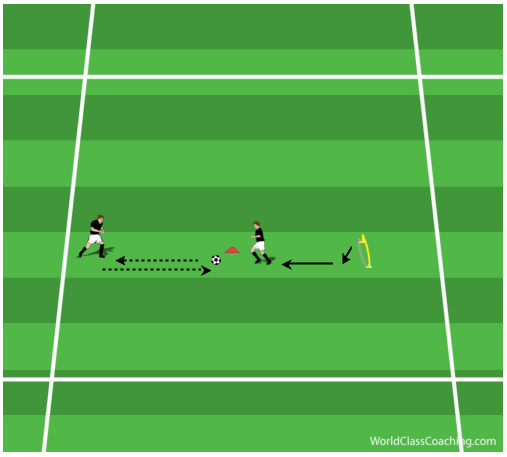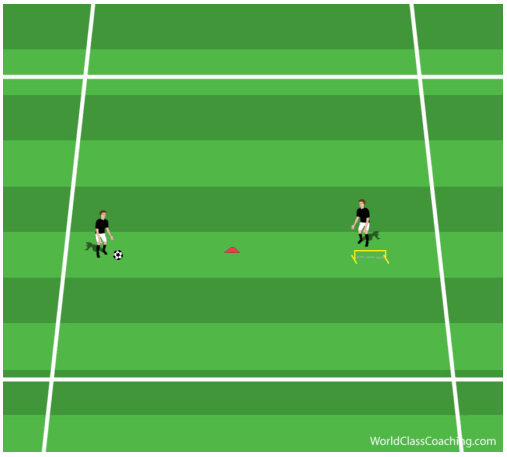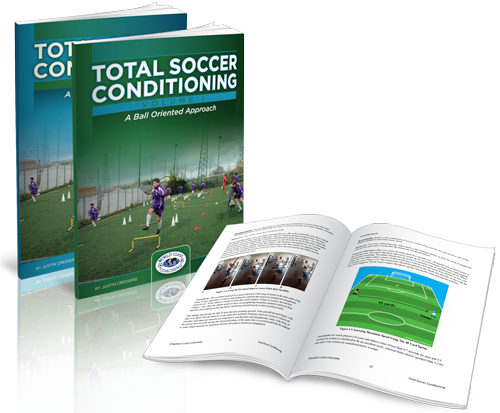By Justin Cresser Author of Total Soccer Conditioning: A Ball Orientated Approach
So many actions and combinations of actions depend on the ability of the player to move their feet rapidly, but in a coordinated manner. Take for instance a wing back jockeying a fast and tricky attacker on the flank in a 1 v 1 situation. The wing back has move their feet fast enough to keep the attacker in front of them, but must also be able to tackle if their opponent takes a bad touch or attempt a cross.
This week and next week’s articles will focus on developing good footwork; in terms of both foot speed and coordination. The exercises presented this week are of a more basic level and can be used earlier in the training year when players are slowly getting back to being game fit. Next week’s activities will be of a more advanced level and should be used only after players have mastered the basic patterns. Both sets of exercises can be used at the start of your training sessions and also incorporate technical training.
Set-Up and Directions:
Divide your players into groups of two. Each pair needs a ball, a small cone and a mini hurdle. For the first exercise, have the player without the ball stand 6 to 12 inches behind the hurdle, facing their partner who is standing 10 to 12 yards away with a ball at their feet. Place the small cone midway between the player with the ball and the hurdle (Figure1).
When ready have the player without the ball jump over the hurdle so that they land no more than 12 inches in front of it (Figure 2).
As soon as they land, they must immediately jump backwards over the hurdle so that they return to their initial starting position. As before, have them repeat the jump as soon as they make contact with the ground. Repeat this process until the player has completed 7 jumps in a row (4 forwards, 3 backwards).
As soon as they have completed the final jump forwards, have them sprint towards the cone where they will receive a pass from their partner that they must return with one (or two) touches (Figure 3).
After making their pass, have the player slowly jog back to their starting position. Complete 3 to 4 repetitions (1 set) and then have the players switch roles. Each player should perform a total of 2 to 3 sets.
For the second exercise, adjust the hurdle so that the player without the ball is standing to the side of the hurdle (Figure 4).
Instead of jumping backwards and forwards, the player now jumps from side to side over the hurdle as quickly as possible. As before, the objective for the player is to repeat the jump as soon as their feet make contact with the ground.
After completing 6 jumps in a row (3 to the left, 3 to the right), the player sprints forwards towards the cone where they will again receive a pass from their partner that they must return with one (or two) touches.
As with the first exercise, have each player complete 3 to 4 repetitions (1 set) and then switch roles.
Progression:
You can progress this exercise by having the player jump off, and land on, one leg. This elevates the intensity of the exercise to a very high level and should only be performed once the player has mastered the first level. You can also choose to have the player rapidly backpedal after completing the one-touch pass until they return to the hurdle. This adds an agility component to the exercise.
Variation:
You can vary this exercise by changing the technical aspect. For instance, instead of having the player perform a one-touch pass after sprinting, they can perform a side-footed volley or a header. You can also have the player with the ball bounce it or toss it high in the air so that the working player has to use different parts of the body to receive the ball.
Best of Luck,
Justin.
Justin Cresser has coached soccer at various levels both in North America and abroad (Hong Kong and Africa). He is currently the Assistant Technical Director at the Soccer Club of Toronto. He has his Advanced National Diploma from the NSCAA and is also a certified strength and conditioning coach. You can check out Justin's best-selling books here.

